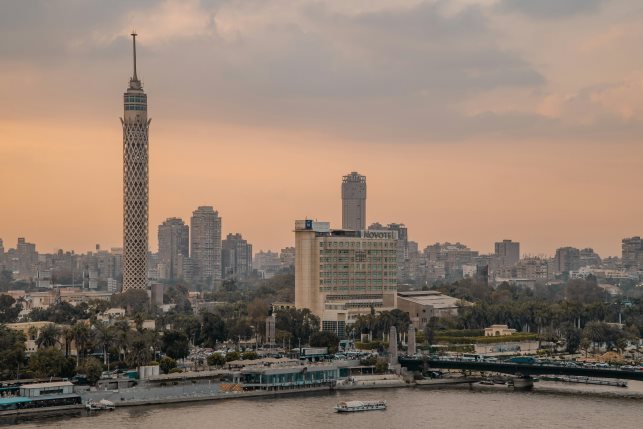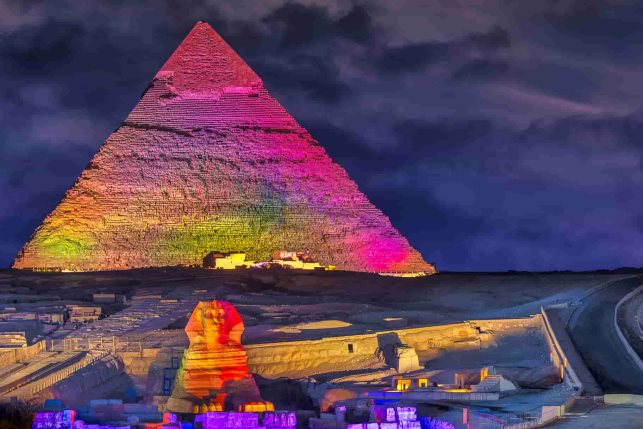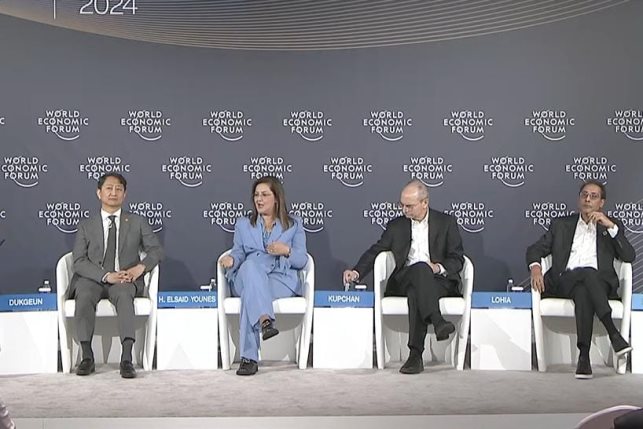Creating Meaningful and Impactful Brand Stories with Coca-Cola’s Islam ElDessouky
“[T]he misconception about storytelling is that storytelling is the strategy… it is not a strategy; it is a vehicle to deliver the strategy,” says Islam ElDessouky, The Coca-Cola Company’s Global Creative Strategy Director for Hydration, Sports, Tea, and Coffee

Storytelling is a fundamental human experience that unites people - creating strong and influential connections, driving deeper engagement and associations with the brand - by simply applying the basic elements of storytelling to advertising copy or campaigns.
And although the leading creatives of the world’s biggest brands continue to highlight storytelling’s benefits; creativity and storytelling still do not have a consistent definition across agencies, businesses, and sectors.
“[T]he misconception about storytelling is that storytelling is the strategy… it is not a strategy; it is a vehicle to deliver the strategy,” says Islam ElDessouky, The Coca-Cola Company’s Global Creative Strategy Director for Hydration, Sports, Tea, and Coffee.
“We need to stop this very exhaustive loop of trying to come up with the cleverest ads because it is labeled creative versus telling a story that is meaningful,” he went on to tell us as we sat down with ElDessouky to discuss storytelling, creativity, the pitching system, and navigating collaborations and dealing with mistakes as one of the world’s largest brands.
Your talk at this year’s Creative Industry Summit (CIS), Creating Meaningful Brand Stories, had a definite impact on the audience. Could you share with us a few of the important points that you shared?
When we say “creating meaningful brands through stories,” it's all about the value; and this value can be financial and non-financial.
The brand is pretty much a promise [to the consumer], and the main reason why a value of a brand could go so high is because it is driving value for a lot of key stakeholders and shareholders.
When we ask “what really builds the brand in a meaningful way,” one very big pillar is storytelling… because storytelling is all about people, so [that] people can create associations with those brands.
They see the brand as another human disguised within a brand that connects with them, and so, here, there are a lot of learnings that we wanted to share; such as that storytelling, first of all, is a commitment. It's not a campaign, it is not a formula. It is a commitment.
Lastly, stories are about people. They’re not about products, so we cannot simply go and say, “listen, here is the bottle and bubbles and all. Yeah, that’s an ad. And it’s fine to do that as well, because you need to promote the product and what it does and the benefits it gives to people.
However, for you to create higher associations, you need stories
I’ve shared some key principles of how you can drive successful storytelling, [but another] is to take risks, because you can’t please everybody. [The best examples] are artists.
If you [listen] musicians such as Duke Ellington who had a phenomenal quote about it or Dave Chappelle, who is a very polarizing comedian, they will tell you that the reason why they have such a large amount of advocacy is because they are taking risks and the reason why they take risks is because they connect with some people more than others.
When you try to please everybody, it goes to the common denominator. You don’t say much when you try to do that
Coca-Cola is well-known for its storytelling, could you give me an example of something Coca-Cola did recently that felt very risky on the creative stage that increased its brand value?
 Coca-Cola's Limited Edition flavor with DJ Marshmello
Coca-Cola's Limited Edition flavor with DJ Marshmello
For instance, last year the brand went into gaming and collaborations, and these are two territories that we were not necessarily doing a lot on but I think, now, we’re doing much more on [these fronts].
Recently, we launched a new flavor with DJ Marshmello. DJs have a certain genre of music, so you could be a Coca-Cola fan but that’s not the music you like, or the flavor is not [to your taste]. For a brand like Coca-Cola, innovation, believe it or not, is risky because it is such a big brand with such a massive and loyal fanbase.
Contrary to that, the brand has taken the other approach, [more like] “[we] are going to drop a lot of innovations, and at the end of the day, if it doesn’t work out for whatever reason, we are going to learn from it and get better”.
I believe that risk is very much a mindset in the marketing industry today. People want to do whatever has worked in the past, but that is counterintuitive to progress
You cannot progress and make leaps if you don’t take risks; whether by putting your name with someone like DJ Marshmello or creating a flavor that [not all] people will like.
There are always risks when you want to collaborate and co-create with someone, but we are taking [a lot] of steps [in filtering the person]. The person needs to fit with the brand, not to maximize risk but to maximize the association.
What’s your top tip on navigating how to select collaborators for the brand to ensure that you’re protecting Coca-Cola and, at the same time, maximizing the partnership?
The tip I would give is for every marketer to understand that we are no longer in control of creativity like we used to be.
I know that people often see creativity [as only] manifesting in advertising, but creativity is manifested in a lot of things
It used to be a one-way dialogue; I have a TV channel, then I’m going to put my ad on it. Nobody comments, likes, shares, or dislikes.
It used to be very controlled, and the planet was not included in this conversation. Now it has gotten democratized with the democratization of creativity; the planet and the people own it now, it’s not the brands, the entertainment industry, or publications, it is now owned by everybody.
Look at all the social media platforms, see what people are creating as content and how they amass a lot of followership versus brands and whatnot. The minute you recognize that you’re not in control [of creativity], and somebody’s doing it better than you, you’re going to be looking forward to collaborating.
[Telling influencers and creators to] talk exactly as “I direct you to,” that doesn’t work anymore… Majority of them will not because their key attribute is their content creation and authenticity. So, the minute you [let go of] control is the moment you liberate yourself and really collaborate. So that would be the only tip I would.
Creative strategists and ad-people have been very vocal about the significance of storytelling in the past few years; what would you say are currently the biggest misconceptions still going on today in this regard?
 Coca-Cola campaign celebrating KSA's decision to lift its prohibition on female drivers in 2017
Coca-Cola campaign celebrating KSA's decision to lift its prohibition on female drivers in 2017
I believe that the misconception about storytelling is that storytelling is the strategy. Storytelling is just one pillar to build your brand. The brand needs to have a creative strategy, which will decide how the brand is going to sound like, where the brand is going to tap onto audiences and consumers, etc.
Storytelling is simply one key pillar in your marketing mix that really amplifies how you build the brand
Storytelling is one component of achieving this. A – it is not a strategy; it is a vehicle to deliver the strategy. B – A lot of people treat storytelling as extremely clever advertising, it shouldn’t be. It could be a story that is not necessarily unique or innovative, but it's extremely relevant because it has people at the center of it.
We need to stop this very exhaustive loop of trying to come up with the cleverest ads because it is labeled creative versus telling a meaningful story.
It’s well-known that creative strategy heavily affects business strategy and goals, but with the increasing number of channels and marketing tools in the market today, how can businesses apply creative strategy in driving success across diverse channels?
Contrary to a lot of people, I think having an abundance of channels is a blessing, it’s not the opposite. I know this can intimidate and overwhelm people because [of questions like] “where do I get resources?” “Where do I get resources to place my brand in all of these channels?”
In my humble view, everything revolves around people. Your target audience – you can call it that, or your tribe or cohort – they have certain passions and overindulge in certain channels versus others. For example, I am what is commonly known globally as a sneakerhead, which means I love sneakers – I have probably have a lot more than I should – and there are certain [channels] I overindulge in, such as hip-hop and basketball, more than anybody that is not a sneakerhead.
Sneaker brands, whether Nike, Adidas, Puma, or Reebok, they want to use a channel to talk to me from an ROI perspective. So, they may think “we know that sneakerheads are into hip-hop,” so [they might say] let’s sponsor a program that shows hip-hop artists, or let's be in a clip with a hip-hop star, or let's get a hip-hop star in our ad, etc.
[With that] I’ll see the product on a channel that I’m used to, so the brand is basically catching the fish where the fish is already going to instead of trying to invite it to go to the desert. The question always is, with people, where are they? Then you can craft your strategy based on where they are spending more time and where they are more passionate.
Everybody is in the business of attention now, including entertainment. Netflix competes with YouTube over attention, it competes with brands, competes with books. Everything competes for attention. People have 24 hours; we don’t have more. We haven’t been able to crack the code where we increase the number of hours per day, so that's fixed, and everybody's trying to get a piece of it.
How can businesses foster and apply creativity in the workplace?
That's a big question, and I'll probably come short, and I think most people will come short too because it has a lot of elements into it. But in my humble view, creativity first and foremost means a solution to a business problem or a business opportunity.
And secondly, the [company] culture has to be willing to learn, because nobody can foster creativity without the acknowledgment that we’re going to fail more than we’re going to succeed.
When people asked Michael Jordan, the greatest basketballer of all time, why he was so great, he said because “I missed a lot of shots.” He made a lot of [baskets] but he also missed. He recognized that “oh, I shot 40,000 times, out of which I scored 20,000.” People [tend] to look at the hits and they forget the misses.
Businesses are the same; you’re going to win some and lose some, so it has to be a mindset first and foremost.
Third is to have the desire, not just the ability, the desire to learn from the misses because we usually shy away from that
Let me ask you then while we're on this, do you have a mistake or something that did not go as planned that you learned a lot from when it comes to your time working at Coca-Cola?
I can start with one that is very dear to my heart, which is about Sprite.
Sprite is a great brand, and the target is usually teens and young adults. And during a part of my career when [targeting] the Gulf countries - [these countries] didn’t have a lot of the [usual] target audience living in that demographic - we kept pushing on global passion points like basketball, music and whatnot… but these were not the people drinking Sprite [there].
We kept doing this and pushing for it, but it didn’t work out. Then we became a global anomaly, people were saying “oh, Sprite in that part of the world is not working”. We needed to understand, so [we asked] who is the biggest group here that consumes Sprite?
[Turned out, Sprite drinkers] living in these countries primarily come from India and Pakistan, and it wasn’t about basketball, it was cricket. So, we changed everything to target cricket, and [it grew] like wildfire, doubling business like no tomorrow, and that is why I say embrace the misses.
We have that as a company; so, we kept going for two years and it wasn’t working, but we learned, and when we learned, we understood and changed the solution. What we don’t have [as a company] is the idea of shying away, [we] accept the misses to guide future success
I struggled with it personally a lot because I love the brand and I love the passion points. I was like “okay, it’s music and basketball, what’s not to love?” But, it’s [just that] the people were different, so that is why you pivot. Once we did, success came forward.
What is your take on the “traditional” pitch system and what can both agency and corporate sides do better to facilitate the process?
This is a difficult question because I think that the problem is not pitching, but how we go about pitching and how we can achieve some sort of informal understanding of how it should work because every person, every company, and every agency has their own take.
A pitch is a rallying cry from a company looking to try outside of its ecosystem to find a better solution to some of the recurrent problems that they're unable to solve, whether it’s a creative or strategic failure to solve it or a financial issue.
…The ones [typically] struggling are agencies, more than the companies as they are in a more advantageous kind of situation; a company opens a request for pitching and then a lot of agencies jump on board… it’s the agencies that struggle with how the process or the lack of a process affects them.
Some principles that I believe should be agreed upon is how is a pitch financial [compensated]? Any company that is invited will spend numerous hours on developing the pitch, because that is how the industry functions, win or lose.
There needs to be some sort of movement [or protection for] agencies, such as a regulator, and so if it is not applied, agencies do not participate in the pitch and so cannot complain and break the system
Secondly, what is a pitch and how is it defined? By the amount of work required, the amount of effort that goes into the pitch? Is it owned by the agency in the [event] that they lose the pitch, or is it owned by the client that gave the brief that inspired the work?
All of these, in my opinion, are reasons why [pitching] is broken.
I haven’t been in Egypt for a long time, but I assume that these are very common symptoms in a lot of places. I would [say] that what needs to happen is that agencies will create some sort of regulator between them that is comprised of all agencies and is independent and very transparent.
I [believe] that we will still need pitches because it gives a great opportunity for companies and agencies to tap onto problems and opportunities that they can actually create an impact on.
*This article was published in our December 2022 - January 2023 issue. You can find our latest issue here





